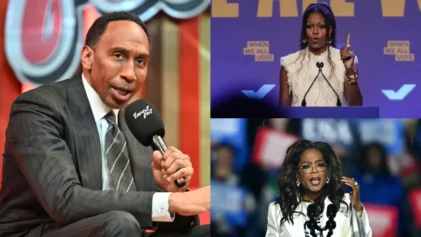The Smithsonian National Museum of African Art houses a “culture of racism” according to a recent letter from a group of former staff members.
Earlier this month the senders addressed the letter to Smithsonian Secretary Lonnie G. Bunch III, the first Black person to hold the position in the institution’s history. In the letter, the group called for the resignation of Christine Mullen Kreamer, the museum’s deputy director and chief curator.

She is accused of displaying “consistent bullying and hostility” toward Black staffers and favoring their white counterparts. The authors claimed there were “multiple complaints” against Kreamer “concerning racism, aggression and mismanagement, according to the former staff members.”
Kreamer’s departure, according to the letter, will “enable real, systemic changes in the museum’s practices and policy implementation.”
Former director Gus Casely-Hayford, who was there from 2018 to 2020, did not improve racial relations in the museum, according to the letter.
“This situation became particularly distressing under Gus Casely-Hayford, resulting in negative impacts on Black staff, as well as NMAfA’s reputation within the broader community,” the letter claimed. Casely-Hayford is a Black man. Since 20008, every director of the museum museum has been Black.
“Unfortunately, these incidents and concerns about systemic racism only grew during Gus’ tenure. He did nothing to address them,” an anonymous member of the sending group told Huff Post. “It’s so important that there’s self-examination within the Black community and there’s a discussion about internal racism.”
A former employee told HuffPost there were only five Black staffers when that staffer left and the curatorial team has been exclusively white for more than a decade. The letter states the team remained that way even though there was “demonstrated interest amongst Black arts professionals and scholars in joining the institution.”
The letter also claimed at least 10 employees “reported or experienced incidents of racial bias, hostile verbal attacks, retaliation, terminations, microaggressions and degrading comments.” However, formal complaints were ignored by supervisors, according to the letter writers.
Like many, the group was inspired George Floyd’s death and the racial justice movement it resurrected.
“Persistent racial disparities at NMAfA are apparent in the application of institutional policies,” the letter stated.
“Recent events have brought deeper attention to systemic racism within museums across our country. In this spirit, we write to you to express our outrage about the current state of the Smithsonian National Museum of African Art,” it continued. “Our goal is to collectively express our concerns and to engage in building an equitable and inclusive museum for our community.”
In a statement to HuffPost, the NMAfA said it is “committed to increasing diversity across the museum and all disciplines; equally essential, we are cognizant of the need to recruit, employ and empower more curators and artists that represent diverse fields and backgrounds.”
Bunch, the Smithsonian secretary, promised The New York Times he would rectify the issue.
“What I will do is evaluate this, look into this, put my own fingerprints on it, understand exactly what’s gone on and try to get to the bottom of it,” Bunch said. “There is no room for racism at the Smithsonian. Too many times, I was the only Black person in the room and I want to make sure that doesn’t happen anymore.”


